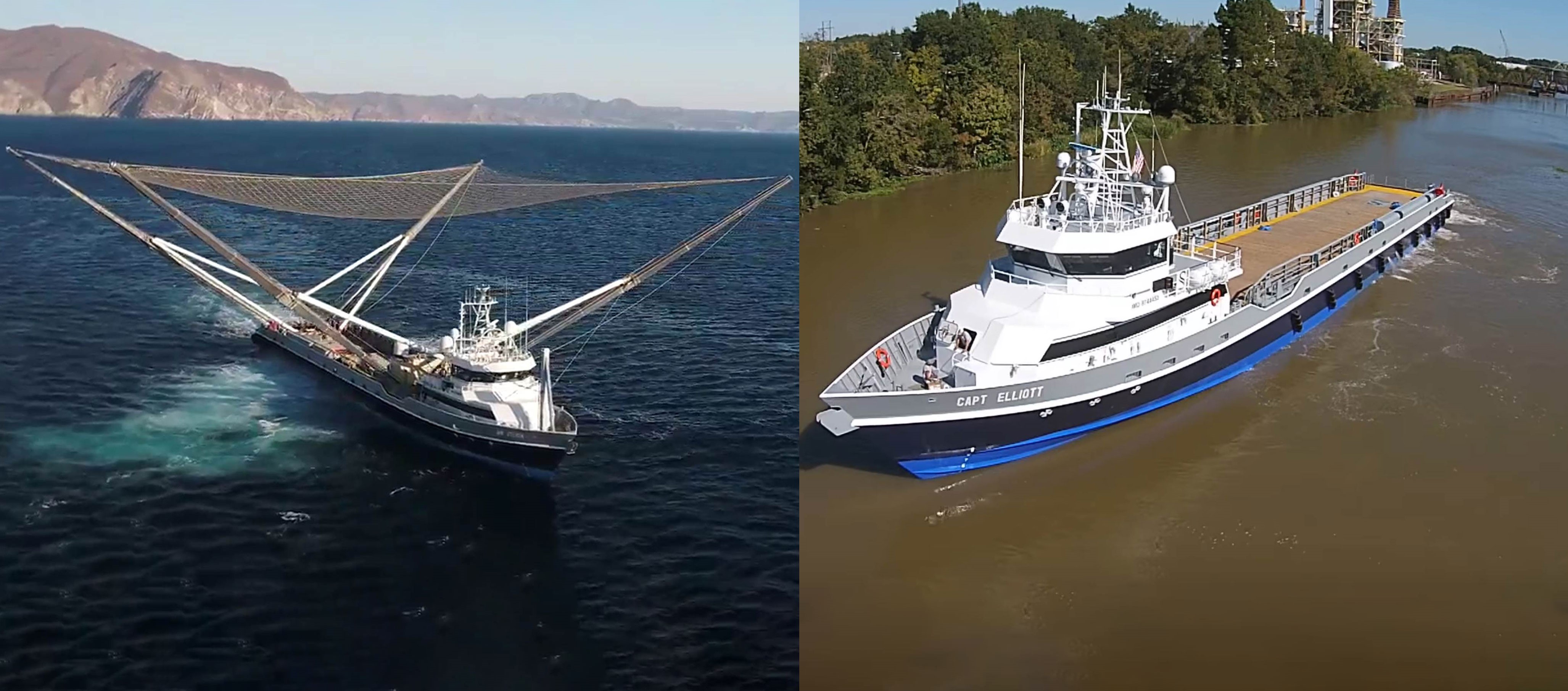

News
SpaceX adds new ship to fleet after fairing catcher Ms. Tree nails second recovery in a row
In a telltale sign that SpaceX is growing much more confident in its ability to consistently recover Falcon 9 fairings, the company has accepted delivery of second recovery ship almost identical to GO Ms. Tree (formerly Mr. Steven) just days after nailing its second fairing catch in a row.
Previously known as M/V Captain Elliott, the new ship appears to have been acquired (or leased) by Guice Offshore (GO) from SEACOR Marine, who purchased Elliott from struggling marine services company Seatran Marine in 2017. One way or another, SpaceX now has a pair of Port Canaveral-based fairing recovery ships in hand – named Ms. Tree and Ms. Chief – and is thus making excellent progress towards catching and reusing both halves of the same Falcon 9 (or Heavy) fairing.
Splurging on ‘ships
Put simply, whoever is paying for or has paid for the two fast supply vessels (FSVs) that are now a part of SpaceX’s rocket recovery fleet has/had a tidy sum to spend. For ships as large, new, and high-performance as Ms. Tree and Ms. Chief, both completed in the mid-2010s, SpaceX or GO would be lucky to pay less than $10M apiece and each ship could easily cost more than $20M, depending on a variety of unknowns. Previous owner Seatran Marine is/was admittedly in dire financial straits, so that could have resulted in an effective fire-sale discount.
Regardless, this is to say that SpaceX was likely willing to splurge and open its wallet wide for extremely high-quality fairing recovery vessels because of just how expensive those fairings are. According to CEO Elon Musk circa 2017, it costs SpaceX $5-6M total to produce a set of Falcon fairing halves, equivalent to roughly 10% of the cost of a Falcon 9 launch ($50M-60M).
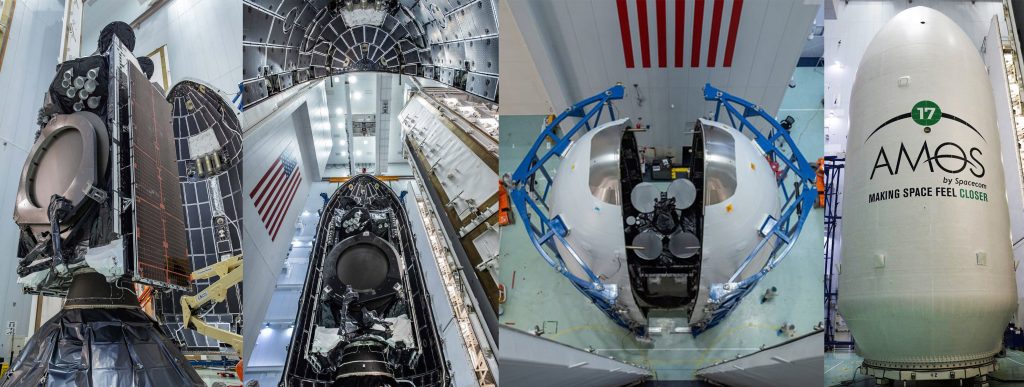
As an example, assume that SpaceX paid a full $50M for Ms. Tree and Ms. Chief – effectively a worst-case cost scenario. Assume that recovering and reusing net-caught Falcon fairings still costs half as much as building new fairings ($3M for two halves), also likely a worst-case scenario given the relative mechanical and propulsive simplicity of fairings.
In this mediocre-at-best scenario, it would still take SpaceX less than 20 launches with both halves recovered to completely recoup the cost of both fairing recovery ships. In the event that reusing caught fairings is only 25% as expensive as building new fairings, SpaceX could recoup its fleet investments in just 10 launches. In fact, cost reduction may even be a secondary consideration next to the potential for effectively doubling fairing production with the same facilities. From that perspective, spending, say, $50M on development and another $50M on cutting-edge recovery vessels could easily be a bargain, especially compared to the $1B+ SpaceX has spent deloping Falcon 9 booster reusability.
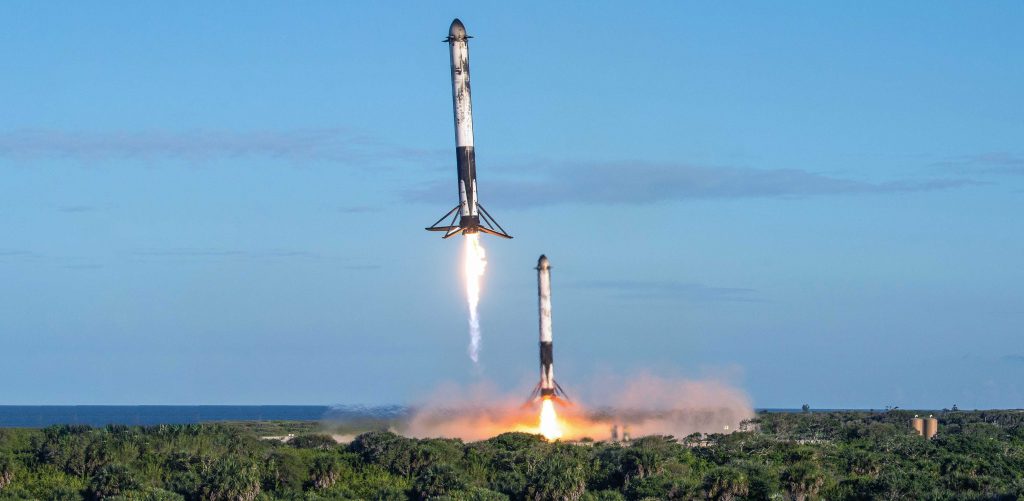
Fairing-catcher Mk4
With GO Ms. Chief’s August 10th arrival at Port Canaveral, SpaceX’s team of Florida-based recovery engineers and technicians will now be tasked with modifying the ship for Falcon fairing catching. SpaceX completed its first fairing recovery-focused modifications back in late 2017, likely producing what was the first version of fairing recovery tech (Mk1). The net proved to be far too small and was replaced in summer 2018 with a net and arms likely 4X larger (Mk2).
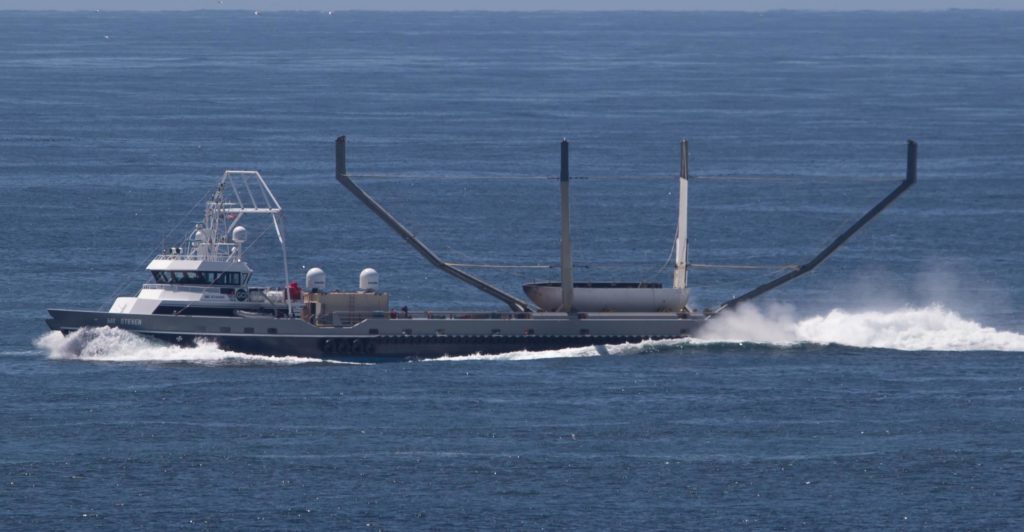
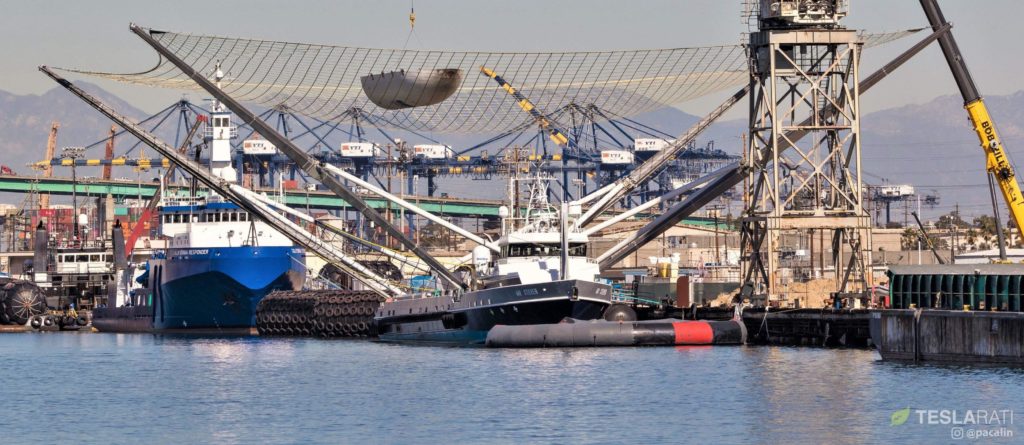
Roughly half a year and several missed catches after Mr. Steven’s Mk2 net was installed, the ship transited the Panama Canal and arrived at Port Canaveral in February 2019. Barely a week or two later, Mr. Steven suffered a failure at sea – well before a planned catch attempt – that saw the ship limp back to port missing the entirety of its net and two of four arms.
After another four months in port, SpaceX installed a third net and arms system on Mr. Steven, featuring distinct differences and apparent upgrades that likely make it Mk3. Shortly after installation and a quick renaming from Mr. Steven to GO Ms. Tree, Ms. Tree’s inaugural Mk3 recovery attempt culminated in SpaceX’s first and second successful fairing catches – back-to-back – on June 24th and August 6th.
Finally, this brings us to the blank slate that is GO Ms. Chief. Compared to Ms. Tree, both vessels are nearly identical: both are built by Gulf Craft, LLC, both are 205 ft x 34 ft (62m x 10m), both have decks rated for ~405 metric tons (900,000 lb), and have top speeds of 26-32 knots (30-37 mph, 50-60 km/h; fully-loaded vs. empty). The lone point of difference is power: Ms. Chief’s engines produce 500 more horsepower and its generators produce an additional 120 kW of power, respective improvements of 5% and 16% relative to Ms. Tree (Mr. Steven).
Despite both ships being nearly identical, SpaceX is unlikely to simply copy and paste Ms. Tree’s thus far successful arms and net, likely instead doing what the company is famous for and fabricating a new and improved variant of the fairing recovery mechanism. This would presumably translate to Mk4. Conveniently, SpaceX appears to be heading into a rare period of no launches, likely stretching almost three months from August 6th (AMOS-17) to late October.
If Mr. Steven and Ms. Tree’s transformations are anything to go by, that hefty chunk of time that should be more than sufficient to fully outfit Ms. Chief with a fresh fairing recovery mechanism, assuming SpaceX has been simultaneously fabricating the hardware in anticipation of Ms. Chief’s arrival.
For now, we’ll have to wait and see if SpaceX’s next launches – both believed to be 60-satellite Starlink missions – will mark the recovery debut of Ms. Chief, as well as the first attempted catch of both Falcon fairing halves. Additionally, following SpaceX’s second successful fairing half catch on August 6th, it’s possible that the company has two recovered halves capable of making a full, flight-proven fairing. Either way, a Starlink launch will likely support the flight-debut of a reused fairing and will almost certainly host the first attempted simultaneous recovery of both fairing halves.
Check out Teslarati’s Marketplace! We offer Tesla accessories, including for the Tesla Cybertruck and Tesla Model 3.
News
Tesla UK sales see 14% year-over-year rebound in June: SMMT data
The SMMT stated that Tesla sales grew 14% year-over-year to 7,719 units in June 2025.

Tesla’s sales in the United Kingdom rose in June, climbing 14% year-over-year to 7,719 units, as per data from the Society of Motor Manufacturers and Traders (SMMT). The spike in the company’s sales coincided with the first deliveries of the updated Model Y last month.
Model Y deliveries support Tesla’s UK recovery
Tesla’s June performance marked one of its strongest months in the UK so far this year, with new Model Y deliveries contributing significantly to the company’s momentum.
While the SMMT listed Tesla with 7,719 deliveries in June, independent data from New AutoMotive suggested that the electric vehicle maker registered 7,891 units during the month instead. However, year-to-date figures for Tesla remain 2% down compared to 2024, as per a report from Reuters.
While Tesla made a strong showing in June, rivals are also growing. Chinese automaker BYD saw UK sales rise nearly fourfold to 2,498 units, while Ford posted the highest EV growth among major automakers, with a more than fourfold increase in the first half of 2025.
Overall, the UK’s battery electric vehicle (BEV) demand surged 39% to to 47,354 units last month, helping push total new car sales in the UK to 191,316 units, up 6.7% from the same period in 2024.
EV adoption accelerates, but concerns linger
June marked the best month for UK car sales since 2019, though the SMMT cautioned that growth in the electric vehicle sector remains heavily dependent on discounting and support programs. Still, one in four new vehicle buyers in June chose a battery electric vehicle.
SMMT Chief Executive Mike Hawes noted that despite strong BEV demand, sales levels are still below regulatory targets. “Further growth in sales, and the sector will rely on increased and improved charging facilities to boost mainstream electric vehicle adoption,” Hawes stated.
Also taking effect this week was a new US-UK trade deal, which lowers tariffs on UK car exports to the United States from 27.5% to 10%. The agreement could benefit UK-based EV producers aiming to expand across the country.
News
Tesla Model 3 ranks as the safest new car in Europe for 2025, per Euro NCAP tests
Despite being on the market longer than many of its rivals, the Tesla Model 3 continues to set the bar for vehicle safety.

The Tesla Model 3 has been named the safest new car on sale in 2025, according to the latest results from the Euro NCAP. Among 20 newly tested vehicles, the Model 3 emerged at the top of the list, scoring an impressive 359 out of 400 possible points across all major safety categories.
Tesla Model 3’s safety systems
Despite being on the market longer than many of its rivals, the Tesla Model 3 continues to set the bar for vehicle safety. Under Euro NCAP’s stricter 2025 testing protocols, the electric sedan earned 90% for adult occupant protection, 93% for child occupant protection, 89% for pedestrian protection, and 87% for its Safety Assist systems.
The updated Model 3 received particular praise for its advanced driver assistance features, including Tesla’s autonomous emergency braking (AEB) system, which performed well across various test scenarios. Its Intelligent Speed Assistance and child presence detection system were cited as noteworthy features as well, as per a WhatCar report.
Other notable safety features include the Model 3’s pedestrian-friendly pop-up hood and robust crash protection for both front and side collisions. Euro NCAP also highlighted the Model 3’s ability to detect vulnerable road users during complex maneuvers, such as turning across oncoming traffic.
Euro NCAP’s Autopilot caution
While the Model 3’s safety scores were impressive across the board, Euro NCAP did raise concerns about driver expectations of Tesla’s Autopilot system. The organization warned that some owners may overestimate the system’s capabilities, potentially leading to misuse or inattention behind the wheel. Even so, the Model 3 remained the highest-scoring vehicle tested under Euro NCAP’s updated criteria this year.
The Euro NCAP’s concerns are also quite interesting because Tesla’s Full Self-Driving (FSD) Supervised, which is arguably the company’s most robust safety suite, is not allowed for public rollout in Europe yet. FSD Supervised would allow the Model 3 to navigate inner city streets with only minimal human supervision.
Other top scorers included the Volkswagen ID.7, Polestar 3, and Geely EX5, but none matched the Model 3’s total score or consistency across categories. A total of 14 out of 20 newly tested cars earned five stars, while several models, including the Kia EV3, MG ZS, and Renault 5, fell short of the top rating.
Elon Musk
Why Tesla’s Q3 could be one of its biggest quarters in history
Tesla could stand to benefit from the removal of the $7,500 EV tax credit at the end of Q3.

Tesla has gotten off to a slow start in 2025, as the first half of the year has not been one to remember from a delivery perspective.
However, Q3 could end up being one of the best the company has had in history, with the United States potentially being a major contributor to what might reverse a slow start to the year.
Earlier today, the United States’ House of Representatives officially passed President Trump’s “Big Beautiful Bill,” after it made its way through the Senate earlier this week. The bill will head to President Trump, as he looks to sign it before his July 4 deadline.
The Bill will effectively bring closure to the $7,500 EV tax credit, which will end on September 30, 2025. This means, over the next three months in the United States, those who are looking to buy an EV will have their last chance to take advantage of the credit. EVs will then be, for most people, $7,500 more expensive, in essence.
The tax credit is available to any single filer who makes under $150,000 per year, $225,000 a year to a head of household, and $300,000 to couples filing jointly.
Ending the tax credit was expected with the Trump administration, as his policies have leaned significantly toward reliance on fossil fuels, ending what he calls an “EV mandate.” He has used this phrase several times in disagreements with Tesla CEO Elon Musk.
Nevertheless, those who have been on the fence about buying a Tesla, or any EV, for that matter, will have some decisions to make in the next three months. While all companies will stand to benefit from this time crunch, Tesla could be the true winner because of its sheer volume.
If things are done correctly, meaning if Tesla can also offer incentives like 0% APR, special pricing on leasing or financing, or other advantages (like free Red, White, and Blue for a short period of time in celebration of Independence Day), it could see some real volume in sales this quarter.
You can now buy a Tesla in Red, White, and Blue for free until July 14 https://t.co/iAwhaRFOH0
— TESLARATI (@Teslarati) July 3, 2025
Tesla is just a shade under 721,000 deliveries for the year, so it’s on pace for roughly 1.4 million for 2025. This would be a decrease from the 1.8 million cars it delivered in each of the last two years. Traditionally, the second half of the year has produced Tesla’s strongest quarters. Its top three quarters in terms of deliveries are Q4 2024 with 495,570 vehicles, Q4 2023 with 484,507 vehicles, and Q3 2024 with 462,890 vehicles.
-

 Elon Musk4 days ago
Elon Musk4 days agoTesla investors will be shocked by Jim Cramer’s latest assessment
-

 News1 week ago
News1 week agoTesla Robotaxi’s biggest challenge seems to be this one thing
-

 Elon Musk2 weeks ago
Elon Musk2 weeks agoFirst Look at Tesla’s Robotaxi App: features, design, and more
-

 News2 weeks ago
News2 weeks agoSpaceX and Elon Musk share insights on Starship Ship 36’s RUD
-

 News2 weeks ago
News2 weeks agoWatch Tesla’s first driverless public Robotaxi rides in Texas
-

 News1 week ago
News1 week agoWatch the first true Tesla Robotaxi intervention by safety monitor
-

 News2 weeks ago
News2 weeks agoTesla has started rolling out initial round of Robotaxi invites
-

 Elon Musk2 weeks ago
Elon Musk2 weeks agoTesla to launch in India in July with vehicles already arriving: report


















